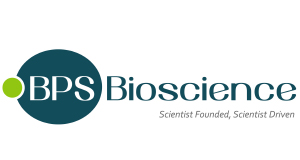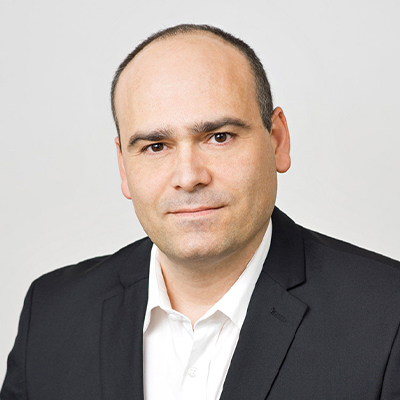Full Length Notch1/CSL Luciferase Reporter HEK293 Cell Line
Full Length Notch1/CSL Luciferase Reporter HEK293 Cell Line
SKU
BPS82201
Packaging Unit
2 vials
Manufacturer
BPS Bioscience
Availability:
loading...
Price is loading...
Products from BPS Bioscience require a minimum order value above 400€
Application: / Screen and validate antibodies against Notch1 for drug discovery and immunotherapy research./ Screen for small molecule inhibitors of the Notch signaling pathway in a cellular model./ Perform ligand/receptor binding assays to screen for potential Notch1 pathway inhibitors
Background: The Notch signaling pathway is highly evolutionarily conserved and plays an important role in cancer as a key driver in maintaining cancer stemness and inducing tumor angiogenesis. Mammals possess four different single transmembrane notch receptors, Notch1-4. Two families of Notch ligands of transmembrane proteins are Delta-like ligand (DLL1, DLL3, and DLL4) and Jagged (JAG1 and JAG2). The Notch signaling pathway is initiated by ligand-receptor binding, which undergoes a two-step proteolytic cleavage by the ADAM (A disintegrin and metalloproteinase with thrombospondin motifs) family proteases and gamma-secretases. The released Notch intracellular domain (NICD) translocates to the nucleus and then interacts with the transcription complex with DNA-binding transcription factors RBP-J (CSL), mastermind-like (MAML) protein, and other coactivator proteins to stimulate expression of Notch target genes. The Notch signaling pathway can be blocked by two major classes of Notch inhibitors: small-molecule gamma-secretase inhibitors and monoclonal antibodies that specifically bind Notch ligands or receptors. Notch signaling participates in the development and homeostasis of multiple tissues and organs. Dysfunction of Notch signaling has severe consequences, including developmental pathologies or cancer (such as T cell acute lymphoblastic leukemia, T-ALL, and urothelial bladder cancer). The use of Notch inhibitors, mainly gamma-secretase inhibitors, as a cancer therapy option and in the regeneration of tissues is ongoing. Further studies will allow us to have a deeper understanding of Notch signaling and will benefit future therapeutic approaches.
Description: The Full Length Notch1/CSL Luciferase Reporter HEK293 Cell Line is a HEK293 cell line that expresses the firefly luciferase reporter under the control of Notch-response elements (CSL responsive elements) and full-length Notch1 (accession number: NM_017617.5). Upon ligand-receptor interaction, the Notch1 receptor is cleaved by γ-secretase. This active Notch1 NICD (Notch intracellular domain) translocate to the nucleus and induces the expression of the luciferase reporter.The cell line was functionally validated for both activation and inhibition of the expression of luciferase reporter with DAPT and DLL4
Host Cell Line: HEK293
Mycoplasma Testing: The cell line has been screened to confirm the absence of Mycoplasma species.
Storage Stability: Cells are shipped in dry ice and should immediately be thawed or stored in liquid nitrogen upon receipt. Do not use a -80°C freezer for long term storage. Contact technical support at support@bpsbioscience.com if the cells are not frozen in dry ice upon.
Supplied As: Each vial contains >1 x 106 cells in 1 ml of Cell Freezing Medium (BPS Bioscience #79796)
Warnings: Avoid freeze/thaw cycles
Biosafety Level: BSL-2
Transfection Method: Lipid Transfection
References: Lu F.M., et al., 1996 Proc. Natl. Acad. Sci. USA 93(11): 5663-5667.
Kanungo J., et al., 2008 J. Neurochem. 106: 2236-48.
Cao L. et al., 2023 Blood Adv. 10.1182/bloodadvances.2023010380
Zhou B., et al., 2022 Nature 7:95
Benedito R., et al., 2009 Cell.12;137(6):1124-35.
Application: / Screen and validate antibodies against Notch1 for drug discovery and immunotherapy research./ Screen for small molecule inhibitors of the Notch signaling pathway in a cellular model./ Perform ligand/receptor binding assays to screen for potential Notch1 pathway inhibitors
Background: The Notch signaling pathway is highly evolutionarily conserved and plays an important role in cancer as a key driver in maintaining cancer stemness and inducing tumor angiogenesis. Mammals possess four different single transmembrane notch receptors, Notch1-4. Two families of Notch ligands of transmembrane proteins are Delta-like ligand (DLL1, DLL3, and DLL4) and Jagged (JAG1 and JAG2). The Notch signaling pathway is initiated by ligand-receptor binding, which undergoes a two-step proteolytic cleavage by the ADAM (A disintegrin and metalloproteinase with thrombospondin motifs) family proteases and gamma-secretases. The released Notch intracellular domain (NICD) translocates to the nucleus and then interacts with the transcription complex with DNA-binding transcription factors RBP-J (CSL), mastermind-like (MAML) protein, and other coactivator proteins to stimulate expression of Notch target genes. The Notch signaling pathway can be blocked by two major classes of Notch inhibitors: small-molecule gamma-secretase inhibitors and monoclonal antibodies that specifically bind Notch ligands or receptors. Notch signaling participates in the development and homeostasis of multiple tissues and organs. Dysfunction of Notch signaling has severe consequences, including developmental pathologies or cancer (such as T cell acute lymphoblastic leukemia, T-ALL, and urothelial bladder cancer). The use of Notch inhibitors, mainly gamma-secretase inhibitors, as a cancer therapy option and in the regeneration of tissues is ongoing. Further studies will allow us to have a deeper understanding of Notch signaling and will benefit future therapeutic approaches.
Description: The Full Length Notch1/CSL Luciferase Reporter HEK293 Cell Line is a HEK293 cell line that expresses the firefly luciferase reporter under the control of Notch-response elements (CSL responsive elements) and full-length Notch1 (accession number: NM_017617.5). Upon ligand-receptor interaction, the Notch1 receptor is cleaved by γ-secretase. This active Notch1 NICD (Notch intracellular domain) translocate to the nucleus and induces the expression of the luciferase reporter.The cell line was functionally validated for both activation and inhibition of the expression of luciferase reporter with DAPT and DLL4
Host Cell Line: HEK293
Mycoplasma Testing: The cell line has been screened to confirm the absence of Mycoplasma species.
Storage Stability: Cells are shipped in dry ice and should immediately be thawed or stored in liquid nitrogen upon receipt. Do not use a -80°C freezer for long term storage. Contact technical support at support@bpsbioscience.com if the cells are not frozen in dry ice upon.
Supplied As: Each vial contains >1 x 106 cells in 1 ml of Cell Freezing Medium (BPS Bioscience #79796)
Warnings: Avoid freeze/thaw cycles
Biosafety Level: BSL-2
Transfection Method: Lipid Transfection
References: Lu F.M., et al., 1996 Proc. Natl. Acad. Sci. USA 93(11): 5663-5667.
Kanungo J., et al., 2008 J. Neurochem. 106: 2236-48.
Cao L. et al., 2023 Blood Adv. 10.1182/bloodadvances.2023010380
Zhou B., et al., 2022 Nature 7:95
Benedito R., et al., 2009 Cell.12;137(6):1124-35.
| SKU | BPS82201 |
|---|---|
| Manufacturer | BPS Bioscience |
| Manufacturer SKU | 82201 |
| Package Unit | 2 vials |
| Quantity Unit | PAK |
| Host | Human |
| Product information (PDF) | Download |
| MSDS (PDF) |
|

 Deutsch
Deutsch






